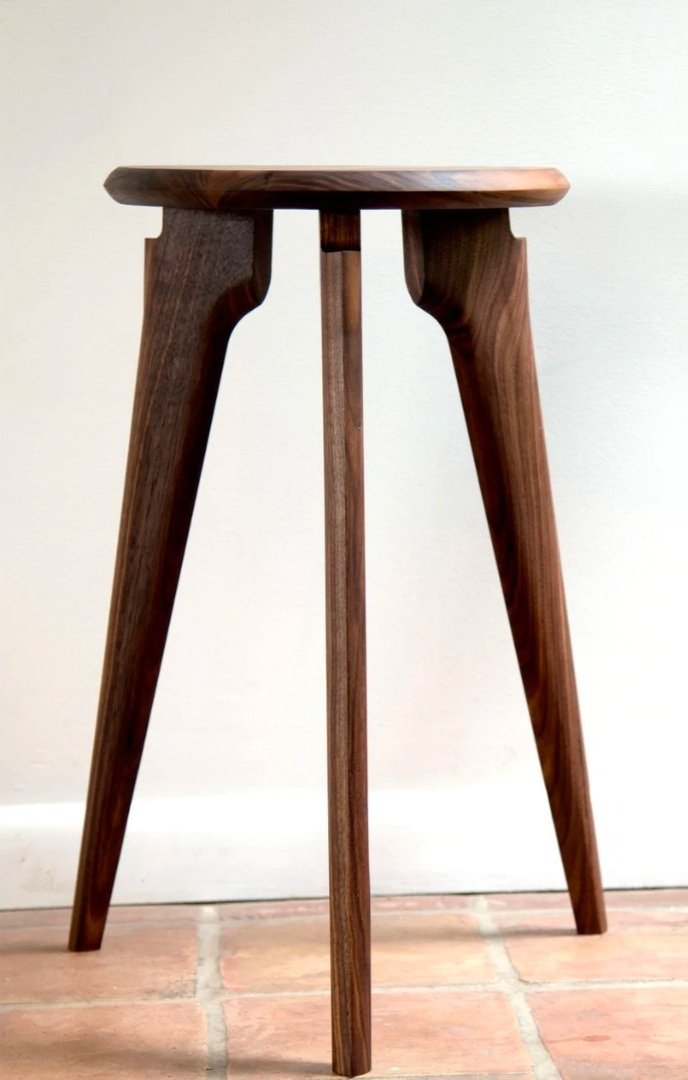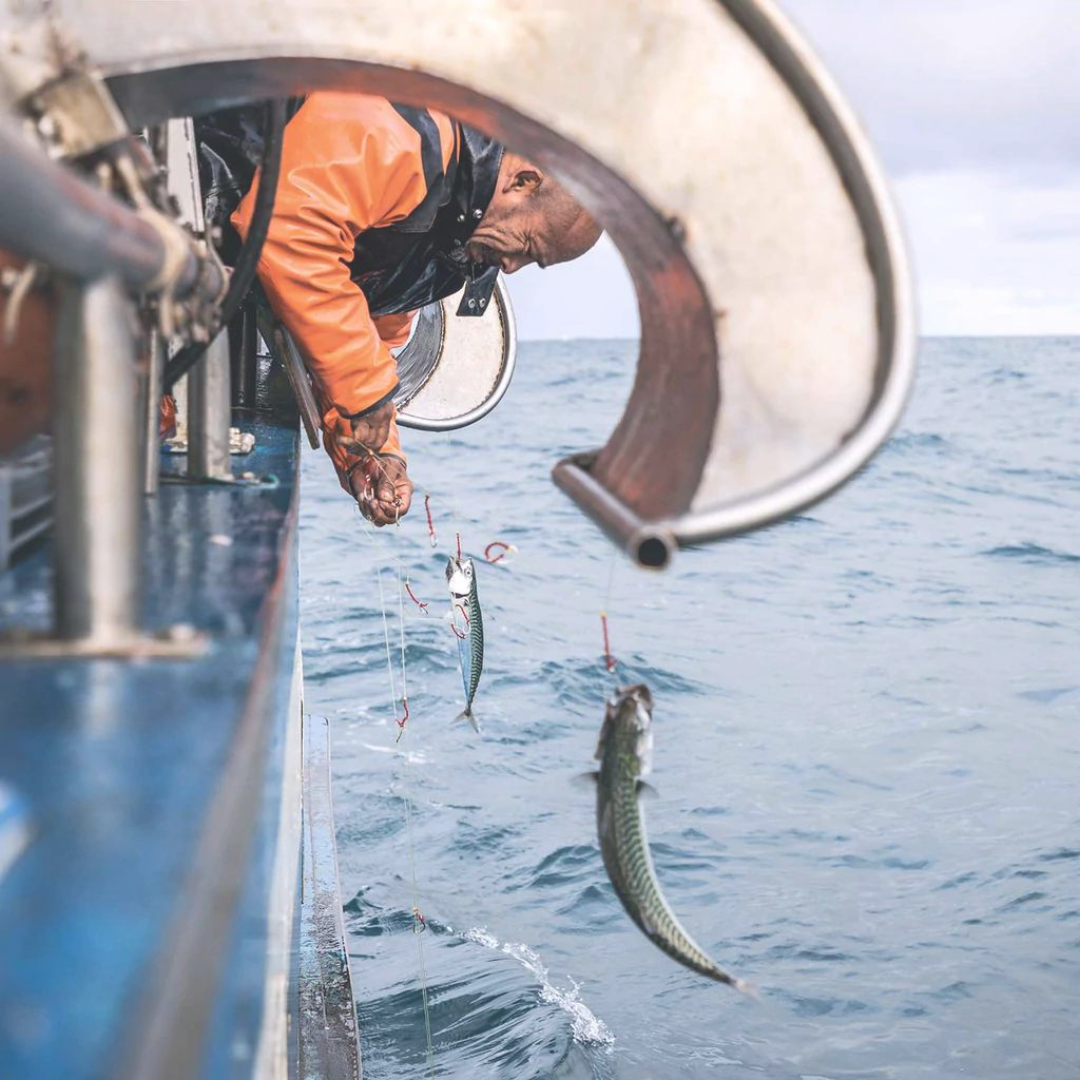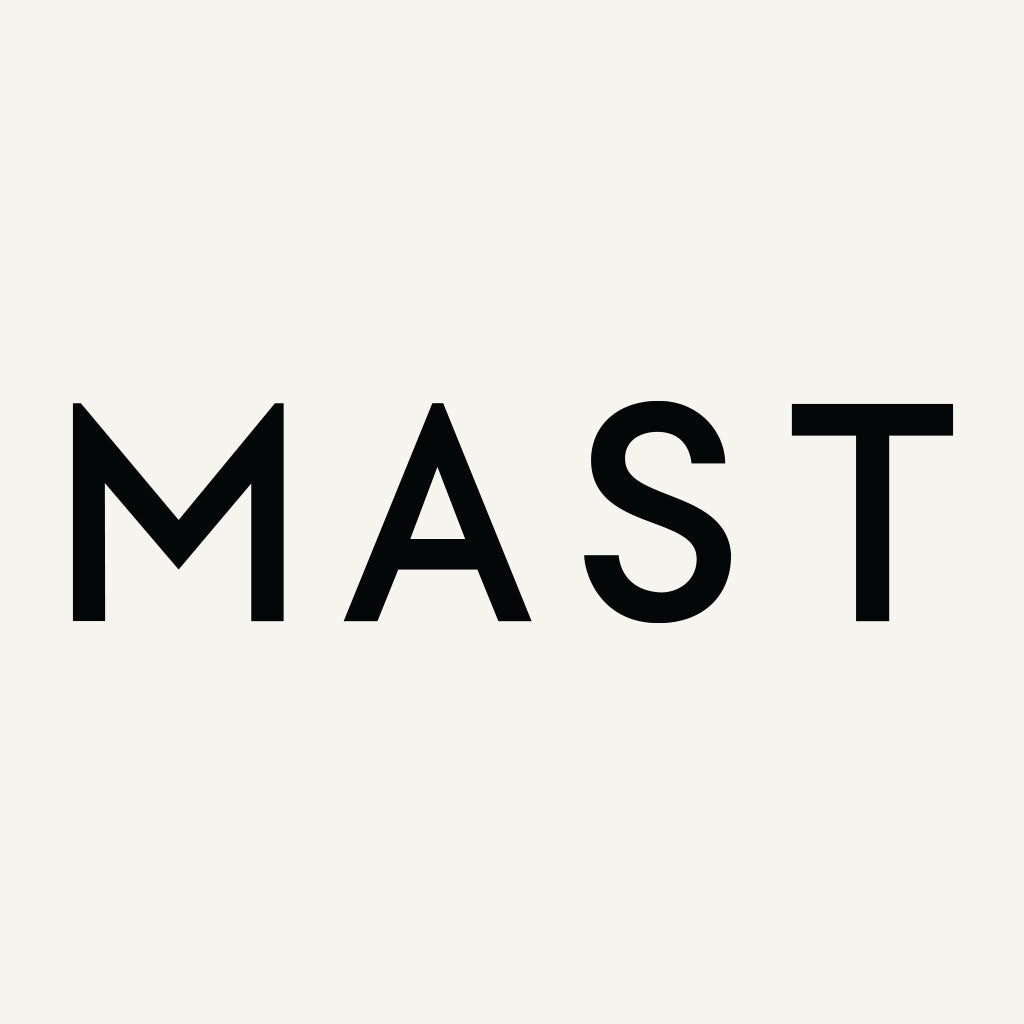Khem Studios
“When you’re coming from a sculpture background, you’re always told the piece should be seen from all angles. We take that approach with everything that we do – we want you to appreciate the underside of a stool just as much as the top of the seat.”
- Kari Lorenson, KHEM Studios
This week, we sat down with Kari Lorenson of Hudson Valley based KHEM Studios, a contemporary homeware and furniture studio that makes all of its pieces with locally-sourced hardwoods. Kari and her husband, Erik Guzman, formed KHEM after both working in sculpture and art fabrication. Down to its very name – an acronym of each of the members of their family – KHEM is an intentional, wholehearted, family-centric enterprise that organically balances elegance and functionality. We love carrying their beautiful cutting boards in our Mast locations – check out the KHEM site to explore their other pieces.
Enjoy our conversation below with Kari, in which we discuss the origins of KHEM’s aesthetic, their hands-on production process, and the possibility of a KHEM name change with the addition of their fifth member.

The sculptural ‘whale bone’ cutting board handmade in walnut by KHEM Studios.
Mast Journal: As you say on your site, KHEM is the acronym of all your first names. Could you take me through that acronym, and how you got started with KHEM Studios?
Kari: Kari is me, H is for our daughter, Hanna, E is my husband Erik, and M is for Maple, our giant schnauzer [laughs]. It’s such a circus, but we were literally on a car ride trying to think of what would be a good name for the company, and really wanted it to be about building something bigger than just us. Erik and I started on this path about six years ago. We had done a lot of art fabrication and were both sculptors who taught at an art school in the city; we had studied a lot of technology and contemporary art and design. We were doing that and found out we were having Hanna, and felt like we needed to rethink how to combine our talents and reshape the vision for our lives, and the objects in our lives. So that was how KHEM Studios was birthed.
Mast Journal: Did you have experience with woodworking and furniture making or was it an entirely new endeavor for you both?
Kari: Erik did a lot of metalwork and woodcarving in his sculpture, and he’d had a big project that was a public art project in Manhattan called “The Weather Beacon,” and it was this insane aluminum-machined thing that produced colors and light according to the anticipated weather and temperatures six hours ahead. So he had a really extensive background in terms of understanding how to make very complex objects very simple things. And in grad school, I did a lot of work with wood and I was raised in a family where we were very aware of woodwork and craft. So that all formulated into us both being really into the sculpture aspect of furniture, the functionality, and how that challenges contemporary art.
Mast Journal: Obviously they’re similar, but what connections have you found between sculpture and woodworking? Was that an organic transition?
Kari: The stuff we were making at first had a lot of color, and we were using this linoleum that’s very popular in Europe. Then that all got very stripped down. Erik honestly has this really great gift – with our legs on our furniture, for instance, he always mixes the organic and the sharp edge. Each of our pieces evolve around one of us coming up with an idea or an inspiration and asking, “Wouldn’t it be great if we could make X, Y, Z?” But because we deal with production, that’s an instance where you have to take that inspiration and kind of replicate it in a very functional, reproducible way so that each one looks beautiful and exactly like the original. So that’s where we blend our backgrounds in art, and the business aspect.
Mast Journal: It reminds me of a previous conversation I had with Eric Bonnin, a ceramicist who Mast goes way back with, and he was talking about production – he was saying he finds the repetition very meditative. Do you feel the same way, or do you prefer the individuality of a custom piece?
Kari: [Laughs] I mean, it’s a lot of sawdust. There’s so much sanding involved. Especially with the cutting boards and those are becoming the thing that’s getting our brand the most out there, there is a nice repeatability in terms of knowing what’s what. Also, with the furniture, custom is great but it’s also “the problem unsolved.” Coming from art fabrication, you’re constantly dealing with these sudden changes and unknown hurdles to tackle. Even as we approach custom now, we want to integrate as much of our knowns into that process while addressing the individuality. It’s a balance of the two.

Photography courtesy of KHEM Studios
Mast Journal: Do you and Erik share roles, or do you have distinct roles in the studio
Kari: I do a lot of the marketing, outreach, shipping, and planning for our shows, and Erik is figuring out how things get made in the studio and whittling that down to the most efficient times. I’ll then do a lot of sanding and finishing work. So, [laughs] it’s a business where we will look at each other and we’re both covered in sawdust, and we’re like, “What the heck did we do?” It’s a balancing act of keeping that going, and we’re raising a child and two giant schnauzers as well.
Mast Journal: Are you sanding and shaping by hand, or are you working with machinery?
Kari: When we were in school, Erik ran and created one of the first digital fabrication labs in New York City. And I built out a textile and technology-focused lab. So we very much understand going through creative processes by utilizing CNC (Computer Numerically Controlled) Technology. And that’s an important part of our production – but people always think you push a button and get the object, like it’s Star Trek [laughs]. And that’s so far from reality. Part of the craft is understanding how far you let the machinery go, and where you need to come in. So we spend more time sanding than there is machining time. It’s the sculpture part – the tactile part of the experience – that is really important to us. That’s what we found people loved and recognized most in our pieces, which is the feel.
Mast Journal: The KHEM aesthetic is so clean and refined, and of course contemporary. Did you have that vision for your pieces from the start, or was that something you came to over time?
Kari: In Erik’s time before we met, he really studied and got to know Japanese architecture. I was raised with very Scandinavian and Danish design, and my parents were very appreciative of design. I also was a teen during the nineties, so minimalism was very in fashion. I also certainly love older styles, and with the leg design with the furniture, we had a fellow furniture maker say it was like a graphic line-version of Victorian style. And that’s so dead on in terms of how we want to come across visually. We’re always aware of how to build the silhouette, and have the piece be as essential as possible. When you’re coming from a sculpture background, you’re always told the piece should be seen from all angles. We take that approach with everything that we do – we want you to appreciate the underside of a stool just as much as the top of the seat.
Mast Journal: What are you aiming for with the cutting boards, specifically? What makes the ideal KHEM cutting board? Can you notice a distinct difference between hand-turned and machine-turned pieces?
Kari: I think most people think of cutting boards simply as a hunk of wood that gets thrown around a lot, but It turns out that people love these statement pieces, like the Mega Monster board, or the Egg Board, or the Mega Whale Bone. So it’s about having these boards that you can use, but if you oil and wax them, you can get the best of both worlds of the beauty of it and the functionality.

The milk stool by KHEM
Mast Journal: Do you have a particular favorite KHEM piece?
Kari: In our own home, I love the Milk Stool. We use it for seating, or a side table, or our five-year-old will grab it and use it for something. I just like witnessing that functionality, and it definitely gets an abuse of daily life but it still looks good! And with the Mega Whale Bone cutting board, I’m just getting lazier, and it’s easier for me to roast a chicken, put it on the board with potatoes and vegetables, put it on the table and say “Serve yourselves!” For us though, it would be boring if our home was just full of our own furniture, because it would all have the same language to it. Especially in the Hudson Valley, there are so many creative people who are part of the design world. The way homes are curated here, you have that amazing mix of contemporary and historic.
Mast Journal: What’s the most challenging part of what you do?
Kari: Right now, it’s finding a balance between work and life. Especially since we’re a married couple who’s also running a business together. It’s also figuring out, post-COVID, are we heading in the right direction? We’re much more aware of how to diversify things so we have more agility. We want to be building something that means something and stands for a certain level of quality. So it’s just all that business thinking of how to build something that has strength to it, and is staying true to what we want.
Mast Journal: What’s your favorite part about what you do?
Kari: For me, it’s the fact that we have control in terms of this ability to make decisions. We’re very grateful that anyone wants to buy our stuff! Running your own business and designing your own stuff, it feels good and empowering. You have to compromise all over the place, but at the same time, you still get to build something. And we both like to build!
Mast Journal: I have to ask – you’d mentioned you have two schnauzers now. Does that mean the KHEM acronym is in need of an update?
Kari: [Laughs] Well, her name is Elsa. And we named her that without ever seeing Frozen. So we joke that it should be KHE²M. Maple, our first schnauzer, was our wedding present to ourselves and it was a big purchase at the time! And it’s a very interesting breed because they’re working dogs. They are both, at this point, so integrated into our daily lives. We bought our property here because Maple got out of the car and was so joyful upon seeing it. So, listen to the universe!
More from The Journal

Catching Up with Patagonia Provisions
In conversation with Christie Biddle of Patagonia’s sustainable food brand, Patagonia Provisions.
Read more
